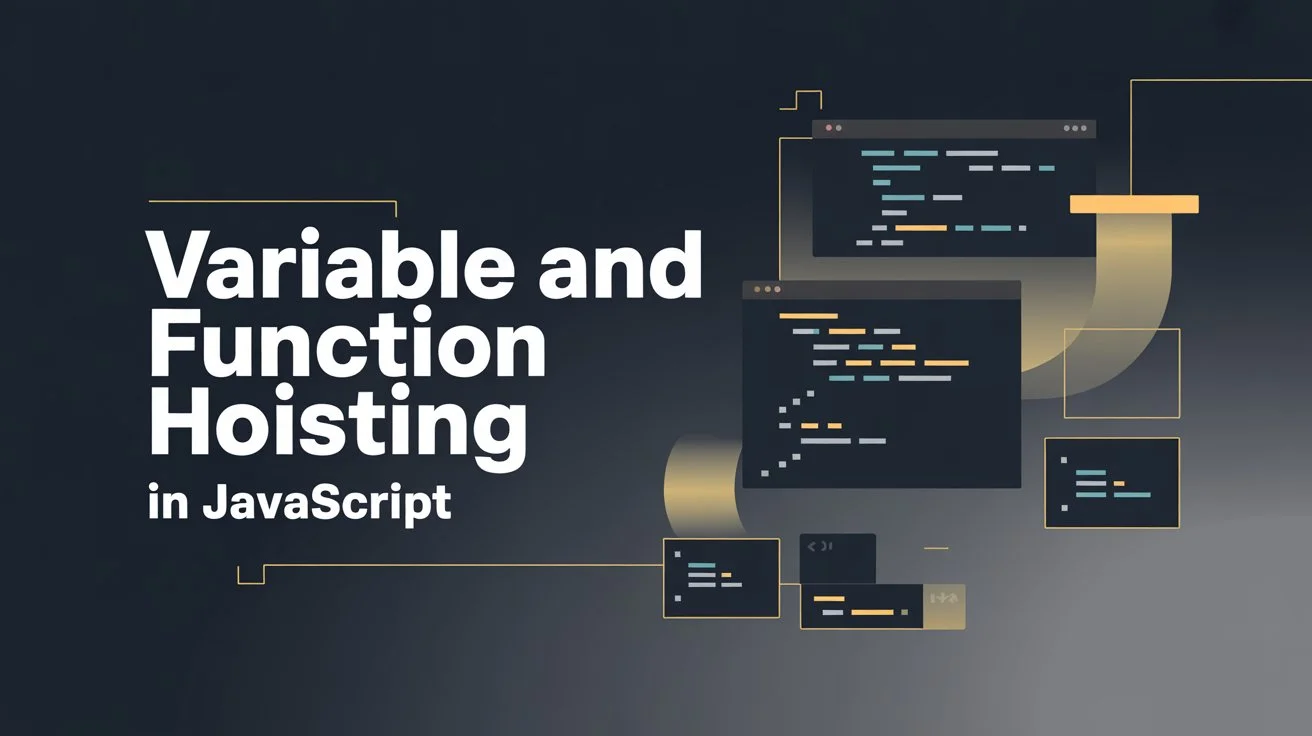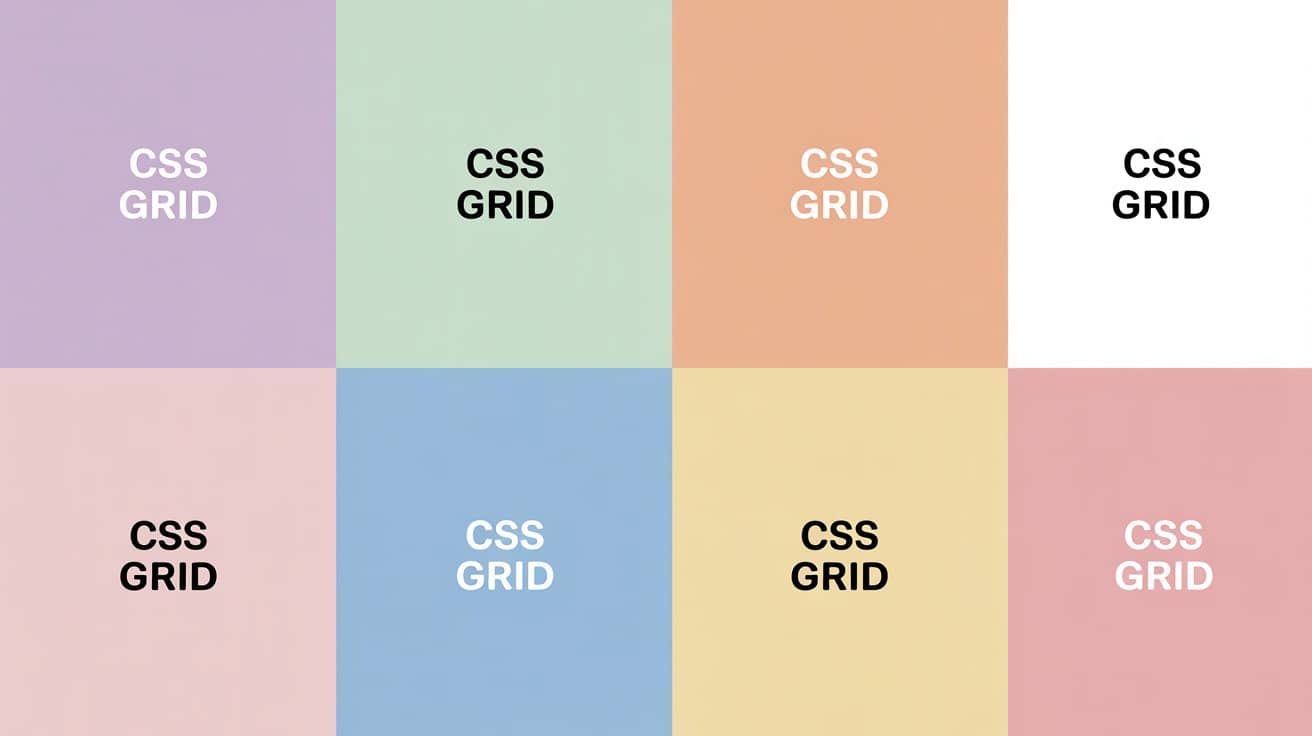Object cloning is one of the most essential operations in JavaScript development. Whether you're managing state in
React applications, working with immutable data patterns, or avoiding unintended side effects, understanding the
different ways to clone objects is crucial. This comprehensive guide explores 6 different methods to clone objects
in JavaScript, from the traditional Object.assign() method to
modern approaches like the spread operator, along with performance considerations and best practices for each
method.
Understanding Object Cloning
Object cloning in JavaScript involves creating a copy of an object. The key distinction is between shallow cloning (copying only the first level of properties) versus deep cloning (copying all nested objects and arrays). Understanding this difference is crucial for writing predictable and maintainable code.
Before diving into the methods, let's establish some common scenarios where object cloning is essential:
- Managing state in React or Vue applications without mutating the original state
- Creating backups of configuration objects before modifications
- Implementing undo/redo functionality in applications
- Working with immutable data patterns in functional programming
- Processing data without affecting the original dataset
Why Can't You Just Use Assignment?
Many developers make the mistake of thinking that simple assignment creates a copy of an object. However, objects in JavaScript are reference types, meaning they store a reference to the memory location rather than the actual data.
const original = { name: 'John', age: 30 };
const copy = original; // This is NOT cloning!
copy.age = 31;
console.log(original.age); // 31 - Original object is modified!
console.log(copy.age); // 31
// Both variables point to the same object in memory
console.log(original === copy); // trueThis is why proper cloning methods are essential. Let's explore the different approaches available.
Method 1: Spread Operator (...) - The Modern Approach
The spread operator, introduced in ES6, provides a concise and elegant way to clone objects. It creates a shallow copy of the object, copying all enumerable properties from the source object to a new object.
Basic Usage
const original = {
name: 'John',
age: 30,
hobbies: ['reading', 'coding']
};
const clone = { ...original };
console.log(clone); // { name: 'John', age: 30, hobbies: ['reading', 'coding'] }
console.log(original === clone); // false - Different objects
console.log(original.hobbies === clone.hobbies); // true - Same array referenceAdding Properties During Cloning
const user = { name: 'John', age: 30 };
// Clone and add new properties
const updatedUser = {
...user,
email: '[email protected]',
isActive: true
};
console.log(updatedUser);
// { name: 'John', age: 30, email: '[email protected]', isActive: true }Overriding Properties
const user = { name: 'John', age: 30, city: 'New York' };
// Clone and override specific properties
const updatedUser = {
...user,
age: 31,
city: 'San Francisco'
};
console.log(updatedUser);
// { name: 'John', age: 31, city: 'San Francisco' }Advantages:
- Concise and readable syntax
- Excellent performance
- Creates a new object (immutable)
- Flexible for adding/overriding properties
Disadvantages:
- Only creates shallow copies
- Requires ES6+ support
- Doesn't copy non-enumerable properties
Method 2: Object.assign() - The Traditional Approach
The Object.assign()
method is the most traditional and widely supported way to clone objects. It copies all enumerable own properties
from one or more source objects to a target object.
Basic Usage
const original = {
name: 'John',
age: 30,
hobbies: ['reading', 'coding']
};
const clone = Object.assign({}, original);
console.log(clone); // { name: 'John', age: 30, hobbies: ['reading', 'coding'] }
console.log(original === clone); // false - Different objects
console.log(original.hobbies === clone.hobbies); // true - Same array referenceMerging Multiple Objects
const user = { name: 'John', age: 30 };
const address = { city: 'New York', country: 'USA' };
const preferences = { theme: 'dark', notifications: true };
// Merge multiple objects into one
const completeUser = Object.assign({}, user, address, preferences);
console.log(completeUser);
// { name: 'John', age: 30, city: 'New York', country: 'USA', theme: 'dark', notifications: true }Property Override Behavior
const base = { name: 'John', age: 30, city: 'New York' };
const updates = { age: 31, city: 'San Francisco' };
// Later objects override properties from earlier objects
const updated = Object.assign({}, base, updates);
console.log(updated);
// { name: 'John', age: 31, city: 'San Francisco' }Advantages:
- Excellent browser support (ES5+)
- Can merge multiple objects
- Creates a new object (immutable)
- Clear and predictable behavior
Disadvantages:
- Only creates shallow copies
- More verbose than spread operator
- Doesn't copy non-enumerable properties
Method 3: JSON Methods - The Deep Clone Approach
Using JSON.stringify()
and JSON.parse() is a
quick way to create deep clones of objects. This method converts the object to a JSON string and then parses it
back into a new object.
Basic Usage
const original = {
name: 'John',
age: 30,
address: {
city: 'New York',
country: 'USA'
},
hobbies: ['reading', 'coding']
};
const clone = JSON.parse(JSON.stringify(original));
console.log(clone); // Deep copy of the original object
console.log(original === clone); // false - Different objects
console.log(original.address === clone.address); // false - Different nested objects
console.log(original.hobbies === clone.hobbies); // false - Different arraysHandling Complex Nested Structures
const complexObject = {
user: {
name: 'John',
profile: {
avatar: 'avatar.jpg',
settings: {
theme: 'dark',
notifications: {
email: true,
push: false
}
}
}
},
metadata: {
created: new Date(),
tags: ['admin', 'premium']
}
};
const deepClone = JSON.parse(JSON.stringify(complexObject));
// Modify the clone without affecting the original
deepClone.user.profile.settings.notifications.email = false;
console.log(original.user.profile.settings.notifications.email); // true - unchanged
console.log(deepClone.user.profile.settings.notifications.email); // false - modifiedAdvantages:
- Creates true deep copies
- Simple and straightforward
- Works with nested objects and arrays
- No external dependencies
Disadvantages:
- Loses functions, undefined values, and symbols
- Converts dates to strings
- Cannot handle circular references
- Performance issues with large objects
Method 4: Object.create() - The Prototype Approach
Object.create() creates
a new object with the specified prototype object and properties. This method is useful when you want to clone an
object while preserving its prototype chain.
Basic Usage
const original = {
name: 'John',
age: 30,
greet() {
return `Hello, I'm ${this.name}`;
}
};
const clone = Object.create(Object.getPrototypeOf(original));
Object.assign(clone, original);
console.log(clone); // { name: 'John', age: 30, greet: [Function: greet] }
console.log(clone.greet()); // "Hello, I'm John"
console.log(Object.getPrototypeOf(clone) === Object.getPrototypeOf(original)); // trueCloning with Custom Prototype
// Define a prototype
const PersonPrototype = {
introduce() {
return `Hi, I'm ${this.name} and I'm ${this.age} years old`;
}
};
const person = Object.create(PersonPrototype);
person.name = 'John';
person.age = 30;
// Clone while preserving prototype
const clone = Object.create(Object.getPrototypeOf(person));
Object.assign(clone, person);
console.log(clone.introduce()); // "Hi, I'm John and I'm 30 years old"Advantages:
- Preserves prototype chain
- Maintains methods and inherited properties
- Good for object-oriented patterns
Disadvantages:
- More complex syntax
- Only creates shallow copies
- Requires understanding of prototypes
Method 5: Lodash cloneDeep() - The Library Approach
Lodash provides robust cloning utilities that handle edge cases and complex scenarios. The cloneDeep() function
creates a deep copy of an object, handling functions, dates, and other complex types properly.
Installation and Basic Usage
// Install lodash: npm install lodash
import { cloneDeep } from 'lodash';
const original = {
name: 'John',
age: 30,
birthDate: new Date('1990-01-01'),
greet() {
return `Hello, I'm ${this.name}`;
},
address: {
city: 'New York',
coordinates: {
lat: 40.7128,
lng: -74.0060
}
},
hobbies: ['reading', 'coding']
};
const clone = cloneDeep(original);
console.log(clone); // Complete deep copy
console.log(clone.birthDate instanceof Date); // true - Date preserved
console.log(typeof clone.greet); // 'function' - Function preserved
console.log(original.address === clone.address); // false - Deep copyHandling Circular References
import { cloneDeep } from 'lodash';
const circular = { name: 'John' };
circular.self = circular; // Circular reference
// JSON methods would fail here, but lodash handles it
const clone = cloneDeep(circular);
console.log(clone.self === clone); // true - Circular reference preserved
console.log(clone !== circular); // true - Different objectsAlternative: Using cloneDeep from lodash-es
// For tree-shaking support
import cloneDeep from 'lodash-es/cloneDeep';
const original = { name: 'John', age: 30 };
const clone = cloneDeep(original);Advantages:
- Handles all data types correctly
- Manages circular references
- Preserves functions and dates
- Well-tested and reliable
Disadvantages:
- Requires external dependency
- Increases bundle size
- Overkill for simple use cases
Method 6: Custom Deep Clone Function - The Flexible Approach
Sometimes you need a custom solution that handles specific requirements or edge cases. Creating a custom deep clone function gives you complete control over the cloning process.
Basic Deep Clone Implementation
function deepClone(obj) {
// Handle null and undefined
if (obj === null || typeof obj !== 'object') {
return obj;
}
// Handle Date objects
if (obj instanceof Date) {
return new Date(obj.getTime());
}
// Handle Arrays
if (Array.isArray(obj)) {
return obj.map(item => deepClone(item));
}
// Handle Objects
if (typeof obj === 'object') {
const cloned = {};
for (let key in obj) {
if (obj.hasOwnProperty(key)) {
cloned[key] = deepClone(obj[key]);
}
}
return cloned;
}
return obj;
}
// Usage
const original = {
name: 'John',
age: 30,
birthDate: new Date('1990-01-01'),
address: {
city: 'New York',
coordinates: { lat: 40.7128, lng: -74.0060 }
},
hobbies: ['reading', 'coding']
};
const clone = deepClone(original);
console.log(clone.birthDate instanceof Date); // true
console.log(original.address === clone.address); // falseAdvanced Implementation with Circular Reference Handling
function deepCloneWithCircular(obj, visited = new WeakMap()) {
// Handle null and undefined
if (obj === null || typeof obj !== 'object') {
return obj;
}
// Check for circular references
if (visited.has(obj)) {
return visited.get(obj);
}
// Handle Date objects
if (obj instanceof Date) {
const cloned = new Date(obj.getTime());
visited.set(obj, cloned);
return cloned;
}
// Handle Arrays
if (Array.isArray(obj)) {
const cloned = [];
visited.set(obj, cloned);
cloned.push(...obj.map(item => deepCloneWithCircular(item, visited)));
return cloned;
}
// Handle Objects
if (typeof obj === 'object') {
const cloned = {};
visited.set(obj, cloned);
for (let key in obj) {
if (obj.hasOwnProperty(key)) {
cloned[key] = deepCloneWithCircular(obj[key], visited);
}
}
return cloned;
}
return obj;
}
// Test with circular reference
const circular = { name: 'John' };
circular.self = circular;
const clone = deepCloneWithCircular(circular);
console.log(clone.self === clone); // true - Circular reference handledPerformance-Optimized Version
function fastDeepClone(obj) {
// Use structuredClone if available (modern browsers)
if (typeof structuredClone !== 'undefined') {
return structuredClone(obj);
}
// Fallback to JSON for simple objects
try {
return JSON.parse(JSON.stringify(obj));
} catch (error) {
// If JSON fails, use custom implementation
return customDeepClone(obj);
}
}
function customDeepClone(obj, visited = new WeakMap()) {
if (obj === null || typeof obj !== 'object') return obj;
if (visited.has(obj)) return visited.get(obj);
const cloned = Array.isArray(obj) ? [] : {};
visited.set(obj, cloned);
for (let key in obj) {
if (obj.hasOwnProperty(key)) {
cloned[key] = customDeepClone(obj[key], visited);
}
}
return cloned;
}Advantages:
- Complete control over cloning behavior
- Can handle specific requirements
- No external dependencies
- Can be optimized for your use case
Disadvantages:
- Requires more code and testing
- Need to handle edge cases manually
- Can be complex for advanced scenarios
Shallow vs Deep Cloning
Understanding the difference between shallow and deep cloning is crucial for choosing the right method for your use case.
Shallow Cloning
Shallow cloning creates a new object but only copies the first level of properties. Nested objects and arrays are still referenced, not copied.
const original = {
name: 'John',
age: 30,
address: {
city: 'New York',
country: 'USA'
},
hobbies: ['reading', 'coding']
};
// Shallow clone using spread operator
const shallowClone = { ...original };
// Modify nested properties
shallowClone.name = 'Jane'; // ✅ Safe - first level property
shallowClone.address.city = 'San Francisco'; // ❌ Affects original!
shallowClone.hobbies.push('gaming'); // ❌ Affects original!
console.log(original.name); // 'John' - unchanged
console.log(original.address.city); // 'San Francisco' - modified!
console.log(original.hobbies); // ['reading', 'coding', 'gaming'] - modified!Deep Cloning
Deep cloning creates a completely independent copy of the object, including all nested objects and arrays.
const original = {
name: 'John',
age: 30,
address: {
city: 'New York',
country: 'USA'
},
hobbies: ['reading', 'coding']
};
// Deep clone using JSON methods
const deepClone = JSON.parse(JSON.stringify(original));
// Modify any properties safely
deepClone.name = 'Jane'; // ✅ Safe
deepClone.address.city = 'San Francisco'; // ✅ Safe - doesn't affect original
deepClone.hobbies.push('gaming'); // ✅ Safe - doesn't affect original
console.log(original.name); // 'John' - unchanged
console.log(original.address.city); // 'New York' - unchanged
console.log(original.hobbies); // ['reading', 'coding'] - unchangedPerformance Comparison
Understanding the performance characteristics of each method is crucial for choosing the right approach, especially when dealing with large objects or frequent cloning operations.
Performance Test Results
// Performance test function
function performanceTest(method, obj, iterations = 1000) {
const start = performance.now();
for (let i = 0; i < iterations; i++) {
method(obj);
}
const end = performance.now();
return end - start;
}
// Test data
const testObject = {
name: 'John',
age: 30,
address: {
street: '123 Main St',
city: 'New York',
country: 'USA',
coordinates: {
lat: 40.7128,
lng: -74.0060
}
},
hobbies: ['reading', 'coding', 'gaming'],
metadata: {
created: new Date(),
tags: ['user', 'premium'],
settings: {
theme: 'dark',
notifications: true
}
}
};
// Test methods
const methods = {
spread: (obj) => ({ ...obj }),
objectAssign: (obj) => Object.assign({}, obj),
json: (obj) => JSON.parse(JSON.stringify(obj)),
lodash: (obj) => cloneDeep(obj),
custom: (obj) => deepClone(obj)
};
// Run tests
const results = {};
for (const [name, method] of Object.entries(methods)) {
results[name] = performanceTest(method, testObject);
}
console.log('Performance Results (ms):', results);Performance Rankings (Typical Results)
- Spread operator: Fastest for shallow cloning
- Object.assign(): Good performance, consistent across browsers
- Custom deep clone: Moderate performance for deep cloning
- Lodash cloneDeep: Good performance with comprehensive features
- JSON methods: Slower but simple for deep cloning
Common Issues and Troubleshooting
Issue 1: Functions Lost in JSON Cloning
Problem: JSON methods remove functions from objects.
const obj = {
name: 'John',
greet() {
return `Hello, I'm ${this.name}`;
}
};
const clone = JSON.parse(JSON.stringify(obj));
console.log(clone.greet); // undefined - function is lost!Solution: Use methods that preserve functions or handle them separately.
// Solution 1: Use lodash
import { cloneDeep } from 'lodash';
const clone = cloneDeep(obj);
// Solution 2: Custom handling
function cloneWithFunctions(obj) {
const cloned = JSON.parse(JSON.stringify(obj));
// Restore functions
for (let key in obj) {
if (typeof obj[key] === 'function') {
cloned[key] = obj[key];
}
}
return cloned;
}Issue 2: Dates Converted to Strings
Problem: JSON methods convert Date objects to strings.
const obj = {
name: 'John',
birthDate: new Date('1990-01-01')
};
const clone = JSON.parse(JSON.stringify(obj));
console.log(clone.birthDate instanceof Date); // false
console.log(typeof clone.birthDate); // 'string'Solution: Use methods that preserve Date objects or convert them back.
// Solution 1: Use lodash
const clone = cloneDeep(obj);
// Solution 2: Custom date handling
function cloneWithDates(obj) {
const cloned = JSON.parse(JSON.stringify(obj));
// Restore dates
for (let key in obj) {
if (obj[key] instanceof Date) {
cloned[key] = new Date(obj[key]);
}
}
return cloned;
}Issue 3: Circular Reference Errors
Problem: JSON methods fail with circular references.
const obj = { name: 'John' };
obj.self = obj; // Circular reference
// This will throw an error
// const clone = JSON.parse(JSON.stringify(obj)); // TypeError: Converting circular structure to JSONSolution: Use methods that handle circular references.
// Solution 1: Use lodash
const clone = cloneDeep(obj);
// Solution 2: Use structuredClone (modern browsers)
if (typeof structuredClone !== 'undefined') {
const clone = structuredClone(obj);
}
// Solution 3: Custom implementation with WeakMap
const clone = deepCloneWithCircular(obj);Real-World Examples
Example 1: React State Management
// React component with state cloning
function UserProfile() {
const [user, setUser] = useState({
name: 'John',
age: 30,
preferences: {
theme: 'light',
notifications: true
}
});
const updatePreference = (key, value) => {
// Immutable update using spread operator
setUser(prevUser => ({
...prevUser,
preferences: {
...prevUser.preferences,
[key]: value
}
}));
};
const resetToDefaults = () => {
// Deep clone for complete reset
const defaultUser = JSON.parse(JSON.stringify({
name: 'John',
age: 30,
preferences: {
theme: 'light',
notifications: true
}
}));
setUser(defaultUser);
};
return (
// Component JSX
);
}Example 2: Configuration Management
// Configuration management with cloning
class ConfigManager {
constructor(defaultConfig) {
this.defaultConfig = defaultConfig;
this.currentConfig = { ...defaultConfig };
}
updateConfig(updates) {
// Shallow clone for simple updates
this.currentConfig = { ...this.currentConfig, ...updates };
}
resetToDefaults() {
// Deep clone to ensure complete reset
this.currentConfig = JSON.parse(JSON.stringify(this.defaultConfig));
}
createSnapshot() {
// Create a snapshot for backup
return JSON.parse(JSON.stringify(this.currentConfig));
}
restoreFromSnapshot(snapshot) {
// Restore from backup
this.currentConfig = JSON.parse(JSON.stringify(snapshot));
}
}
// Usage
const configManager = new ConfigManager({
api: {
baseUrl: 'https://api.example.com',
timeout: 5000
},
ui: {
theme: 'light',
language: 'en'
}
});Example 3: Data Processing Pipeline
// Data processing with object cloning
function processUserData(rawData) {
// Create a deep clone to avoid modifying original data
const data = JSON.parse(JSON.stringify(rawData));
// Process the cloned data
data.users.forEach(user => {
// Add computed properties
user.fullName = `${user.firstName} ${user.lastName}`;
user.isActive = user.lastLogin > new Date(Date.now() - 30 * 24 * 60 * 60 * 1000);
// Normalize address
if (user.address) {
user.address.country = user.address.country.toUpperCase();
}
});
// Filter and sort
const activeUsers = data.users
.filter(user => user.isActive)
.sort((a, b) => a.lastName.localeCompare(b.lastName));
return {
...data,
users: activeUsers,
processedAt: new Date()
};
}Best Practices and Recommendations
When to Use Each Method
- Use spread operator: For modern codebases with ES6+ support and simple shallow cloning
- Use Object.assign(): When you need maximum browser compatibility or merging multiple objects
- Use JSON methods: For simple deep cloning when you don't have functions or dates
- Use lodash cloneDeep: For complex objects with functions, dates, or circular references
- Use custom functions: When you need specific behavior or performance optimizations
Performance Guidelines
- For small objects (< 100 properties): Use spread operator for readability
- For large objects (> 1000 properties): Consider performance implications
- For frequent cloning: Use shallow cloning when possible
- For complex objects: Use lodash or custom implementations
Code Quality Tips
- Always consider whether you need shallow or deep cloning
- Use consistent methods across your codebase
- Add comments for complex cloning logic
- Test with edge cases (circular references, functions, dates)
- Consider using TypeScript for better type safety
- Be aware of memory implications with large objects
Browser Compatibility
Understanding browser support is crucial for choosing the right method for your project:
Support Matrix
- Object.assign(): All modern browsers (IE not supported)
- Spread operator: Modern browsers (Chrome 46+, Firefox 16+, Safari 8+)
- JSON methods: All browsers (IE8+)
- Object.create(): All modern browsers (IE9+)
- structuredClone(): Very new browsers (Chrome 98+, Firefox 94+)
Polyfills and Fallbacks
// Polyfill for Object.assign if needed
if (typeof Object.assign !== 'function') {
Object.assign = function(target) {
if (target == null) {
throw new TypeError('Cannot convert undefined or null to object');
}
var to = Object(target);
for (var index = 1; index < arguments.length; index++) {
var nextSource = arguments[index];
if (nextSource != null) {
for (var nextKey in nextSource) {
if (Object.prototype.hasOwnProperty.call(nextSource, nextKey)) {
to[nextKey] = nextSource[nextKey];
}
}
}
}
return to;
};
}
// Safe spread operator usage with fallback
function safeClone(obj) {
if (typeof obj !== 'object' || obj === null) {
return obj;
}
// Try spread operator first
try {
return { ...obj };
} catch (error) {
// Fallback to Object.assign
return Object.assign({}, obj);
}
}Modern Alternatives
structuredClone() - The Future of Cloning
The structuredClone()
function is a new web standard that provides native deep cloning capabilities with better performance and support
for more data types.
// Modern deep cloning with structuredClone
if (typeof structuredClone !== 'undefined') {
const original = {
name: 'John',
birthDate: new Date('1990-01-01'),
greet() {
return `Hello, I'm ${this.name}`;
},
address: {
city: 'New York',
coordinates: { lat: 40.7128, lng: -74.0060 }
}
};
const clone = structuredClone(original);
console.log(clone.birthDate instanceof Date); // true
console.log(typeof clone.greet); // 'function'
console.log(original.address === clone.address); // false
}Immer - Immutable State Management
For complex state management scenarios, libraries like Immer provide a more elegant approach to immutable updates.
import { produce } from 'immer';
const originalState = {
user: {
name: 'John',
preferences: {
theme: 'light',
notifications: true
}
},
todos: [
{ id: 1, text: 'Learn cloning', completed: false }
]
};
// Immutable update with Immer
const newState = produce(originalState, draft => {
draft.user.name = 'Jane';
draft.user.preferences.theme = 'dark';
draft.todos.push({ id: 2, text: 'Master Immer', completed: false });
});
console.log(originalState === newState); // false
console.log(originalState.user === newState.user); // false
console.log(originalState.todos === newState.todos); // falseConclusion
Object cloning in JavaScript is a fundamental operation that every developer should master. Each of the 6 methods we've explored has its own strengths and use cases. The spread operator remains the most popular choice for shallow cloning due to its clean syntax and excellent performance, while JSON methods provide a simple solution for deep cloning when dealing with simple data structures.
The key to choosing the right method lies in understanding your specific requirements: Do you need shallow or deep cloning? Are you working with complex objects containing functions or dates? Do you need to handle circular references? By considering these factors and following the best practices outlined in this guide, you can write efficient, maintainable code that handles object cloning effectively.
Remember that performance considerations become more important as your objects grow in complexity, and always test your chosen method with realistic data structures. Whether you're building a simple web application or a complex data processing system, the right object cloning technique will help you write cleaner, more efficient JavaScript code.
As JavaScript continues to evolve, new methods like structuredClone() will
provide even better solutions, but the fundamental principles of object manipulation remain constant. By mastering
these 6 methods, you'll be well-equipped to handle any object cloning challenge that comes your way.




